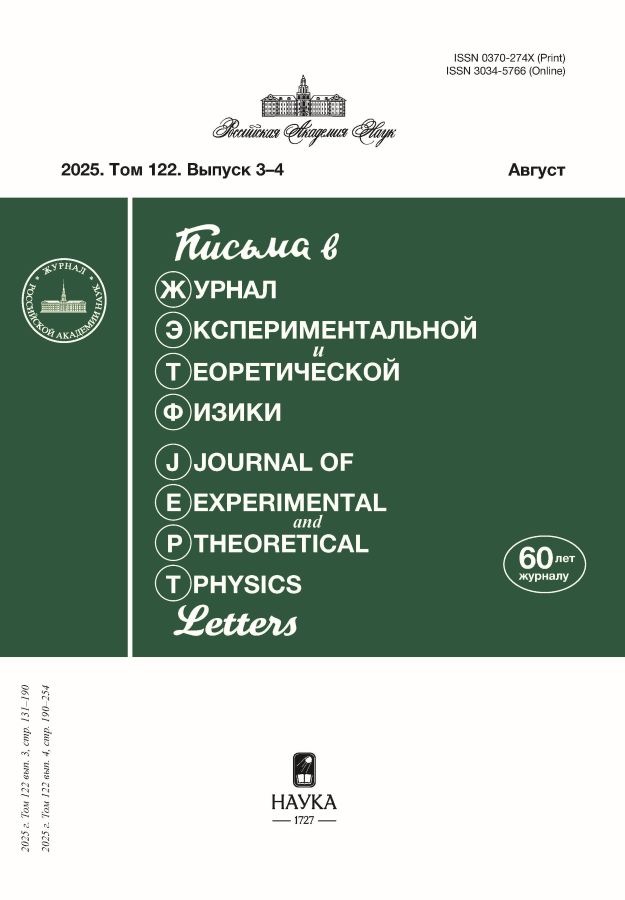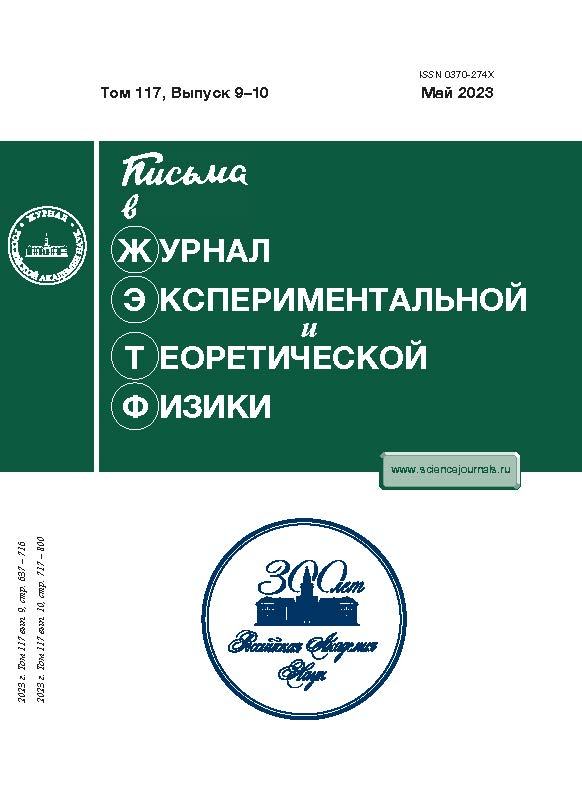Interaction Potential of Protons and Hydrogen Atoms with Metals
- Authors: Babenko P.Y.1, Mikhaylov V.S1, Zinov'ev A.N1
-
Affiliations:
- Ioffe Institute, 194021, St. Petersburg, Russia
- Issue: Vol 117, No 9-10 (5) (2023)
- Pages: 723-726
- Section: Articles
- URL: https://cardiosomatics.ru/0370-274X/article/view/662544
- DOI: https://doi.org/10.31857/S1234567823100026
- EDN: https://elibrary.ru/CKNVPQ
- ID: 662544
Cite item
Abstract
Approximate potentials for protons and hydrogen atoms in metals have been proposed. It has been shown that the difference between the interatomic interaction potentials obtained in the density functional theory for the gas phase and our potentials obtained by processing experimental data on the scattering of atomic particles from the surface of solids can be explained by including the screening of the charge of an incident particle. The effect of screening in the potential on the angular distributions of atomic particles passed through thin films and on nuclear stopping powers has been established.
About the authors
P. Yu Babenko
Ioffe Institute, 194021, St. Petersburg, Russia
Email: babenko@npd.ioffe.ru
V. S Mikhaylov
Ioffe Institute, 194021, St. Petersburg, Russia
Email: babenko@npd.ioffe.ru
A. N Zinov'ev
Ioffe Institute, 194021, St. Petersburg, Russia
Author for correspondence.
Email: babenko@npd.ioffe.ru
References
- J. Neufeld and R. H. Ritchie, Phys. Rev. 98, 1632 (1955).
- P. M. Echenique, F. Flores, and R. H. Ritchie, Solid State Phys. 43, 229 (1990).
- С. А. Майер, Плазмоника: теория и приложения, НИЦ "Регулярная и хаотическая динамика", М. (2011).
- Г. В. Дедков, УФН 165, 919 (1995).
- C. Bjorkas, N. Juslin, H. Timko, K. Vortler, K. Nordlund, K. Henriksson, and P. Erhart, J. Phys.: Condens. Matter 21, 445002 (2009).
- М. В. Прокофьев, В. В. Светухин, М. Ю. Тихончев, Изв. Самарского НЦ РАН 15, 1024 (2013).
- N. Juslina, P. Erhart, P. Tr¨askelin, J. Nord, K. O. E. Henriksson, K. Nordlund, E. Salonen, and K. Albe, J. Appl. Phys. 98, 123520 (2005).
- H. W. Sheng, M. J. Kramer, A. Cadien, T. Fujita, and M. W. Chen, Phys. Rev. B 83, 134118 (2011).
- K. N. Dzhumagulova, E. O. Shalenov, and G. L. Gabdullina, Phys. Plasmas 20, 042702 (2013).
- В. Экштайн, Компьютерное моделирование взаимодействия частиц с поверхностью твердого тела, Мир, М. (1995).
- K. Saitoh, Rad. E. 82, 205 (1984).
- П. Ю. Бабенко, А. Н. Зиновьев, В. С. Михайлов, Д. С. Тенсин, А. П. Шергин, Письма в ЖТФ 48, 10 (2022).
- П. Ю. Бабенко, А. Н. Зиновьев, Д. С. Тенсин, ЖТФ 92, 1643 (2022).
- C. Kittel, Introduction to Solid State Physics, 8th ed., John Wiley & Sons, NY (2005).
- Л. Д. Ландау, Е. М. Лифшиц, Квантовая механика (нерелятивистская теория), т. 3, Физматлит, М. (2004).
- А. Н. Зиновьев, П. Ю. Бабенко, Письма в ЖЭТФ 115, 603 (2022).
- R. Blume, W. Eckstein, and H. Verbeek, NIM 168, 57 (1980).
- M. Fama, G. H. Lantschner, J. C. Eckardt, C. D. Denton, and N. R. Arista, NIMB 164-165, 241 (2000).
Supplementary files











